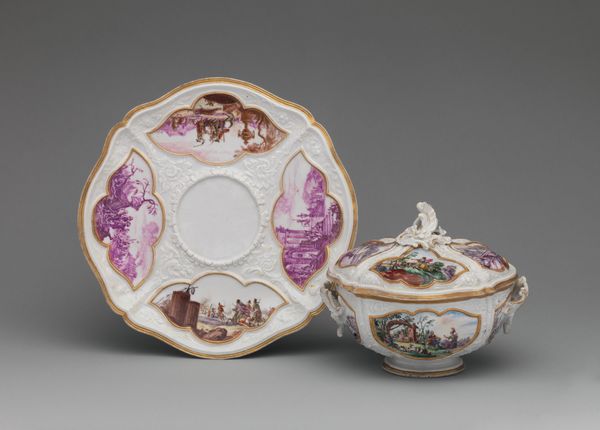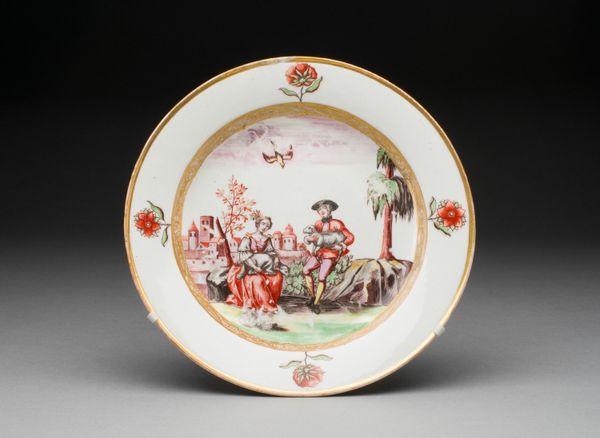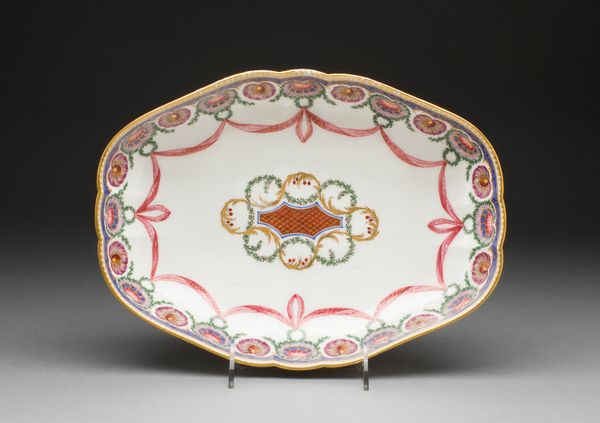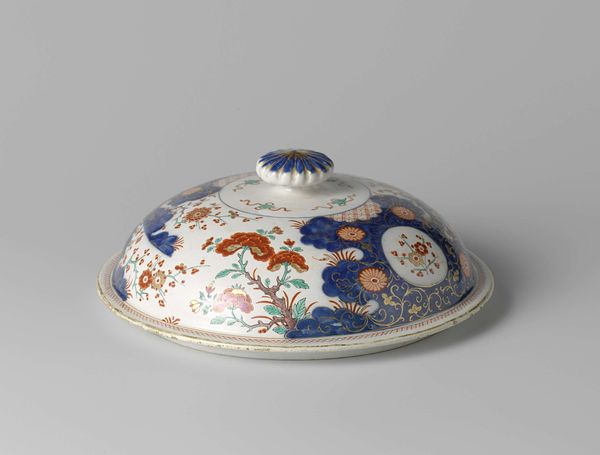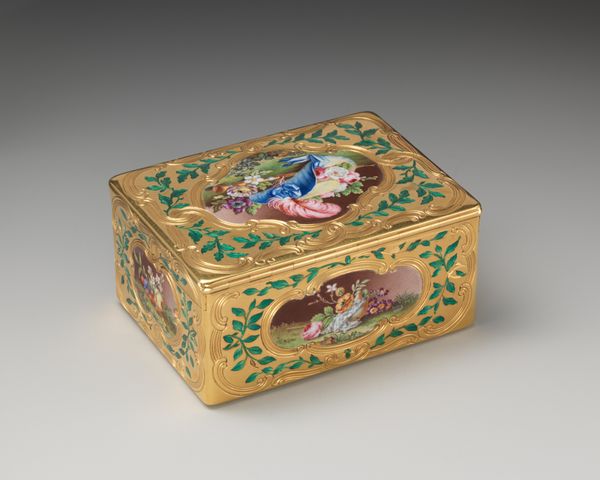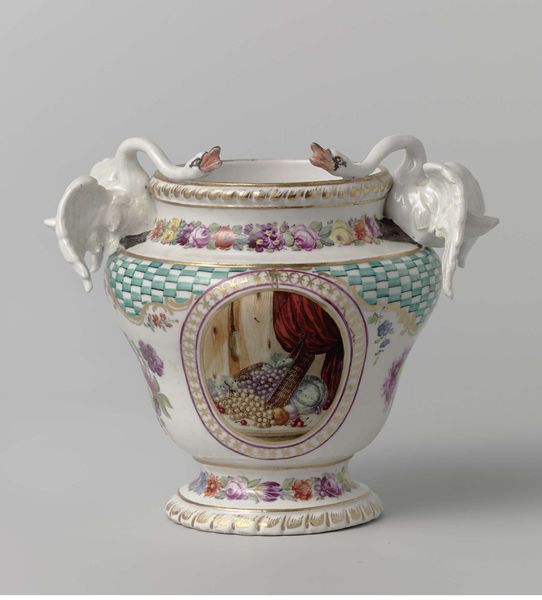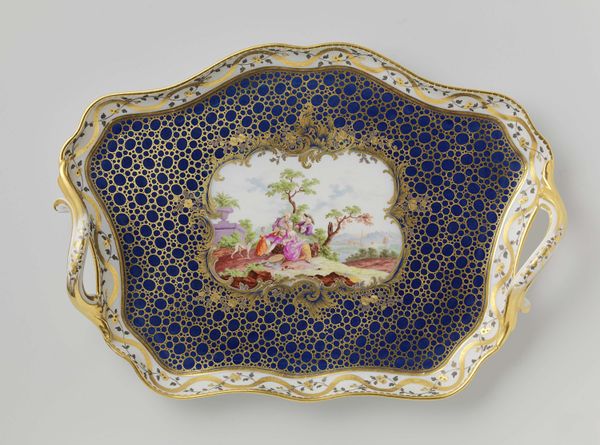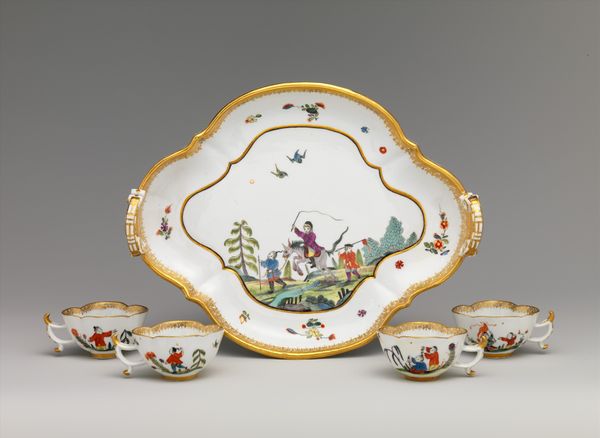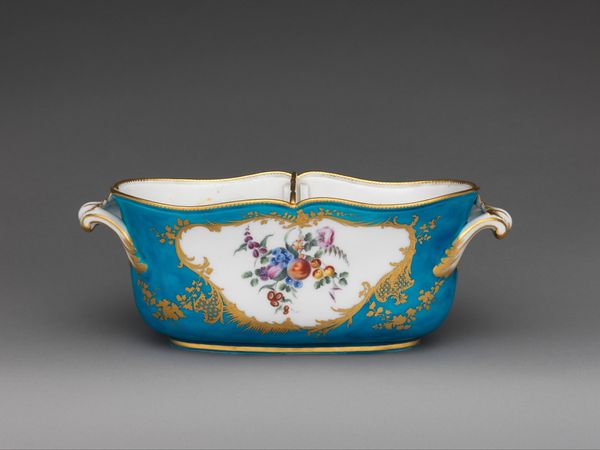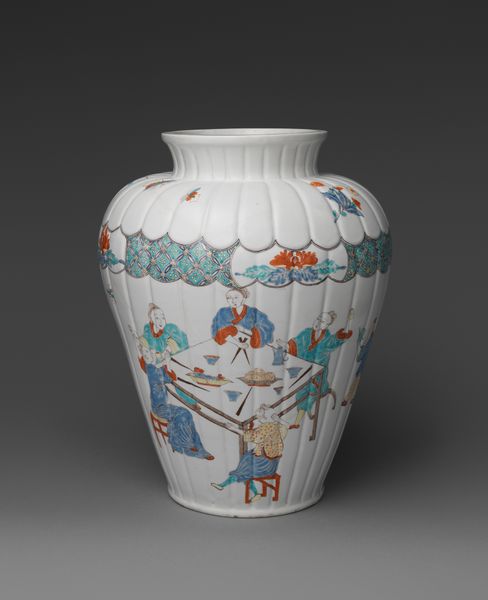
ceramic, sculpture
#
landscape
#
ceramic
#
sculpture
#
genre-painting
#
decorative-art
#
rococo
Dimensions: Overall: 5 7/8 × 7 7/8 × 6 1/2 in. (14.9 × 20 × 16.5 cm)
Copyright: Public Domain
Curator: Standing here, we are looking at an earthenware Jardinière, or decorative flower container. It was created sometime between 1765 and 1775 by Levavasseur. Editor: It feels quite playful! The ruffled edges and pastel palette give it such a light and airy mood, but also sort of a bygone formality, a staged leisure. Curator: I agree. The idyllic genre-scenes painted on the sides also speak to a very particular aesthetic ideal—a romantic vision of country life, though likely quite divorced from reality for most. Each side features figures within idealized landscapes: lovers playing music, a woman seated as if in repose. It presents the age-old archetype of beauty. Editor: But whose beauty? We should consider, perhaps, this pastoral fantasy not just as a design choice but as an indication of the elite's desire for a sort of… manufactured simplicity. Levavasseur presents these genre scenes as universal but excludes any element of rural poverty. What did "nature" even mean at this time? Curator: Indeed, it is an aestheticized nature, filtered through the lens of courtly love. I wonder if the function of this Jardinière speaks symbolically? Is nature being framed as an aesthetic object, both literally and figuratively? Editor: Absolutely! By literally containing nature, reducing it to a manageable display, there is an assertion of dominion—both over nature itself and perhaps symbolically over those associated with it. Even the very Rococo details—the curling foliage—echo and contain the floral elements it would originally present. Curator: And yet, I cannot help but find something charming about the persistence of this fantasy. Though its socio-political context is definitely worthy of scrutiny, it remains a powerful emblem. The symbolism evokes an inherent and persistent sense of romantic aspiration. Editor: Maybe there is a lingering appeal in yearning, and the ability of objects to reveal uncomfortable beauty that, despite its social history, is deeply embedded within it. It’s a nice object to meditate on as an access point to ideas of pastoral romanticism versus the true toil that creates and surrounds that fantasy.
Comments
No comments
Be the first to comment and join the conversation on the ultimate creative platform.

